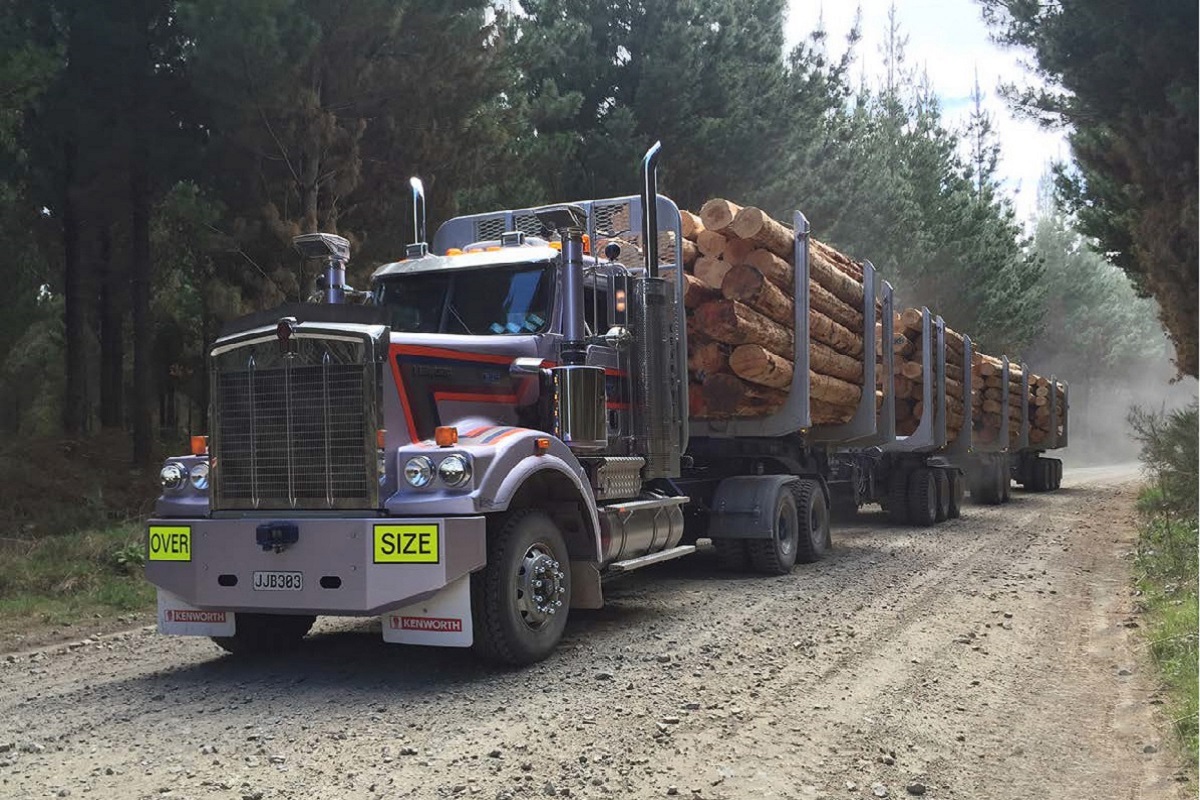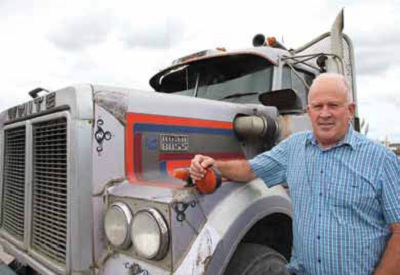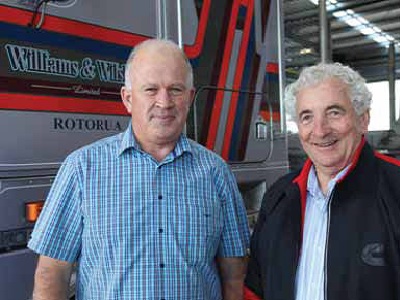
When Warwick Wilshier bought a second-hand White Road Boss to go logging as an owner-driver in 1982, he wasn’t exactly planning to build the business that today is one of the stand-out names in New Zealand’s timber industry.
Williams & Wilshier – Garry Williams is no longer a partner in the Rotorua-based business – operates 68 company log trucks while also having 20 fulltime owner-drivers. Warwick also has a third share in Gisborne-based Pacific Haulage which has 40 units in logging on the North Island’s east coast.
Around 3.5 million tonnes of logs are moved in a year by the Williams & Wilshier and Pacific Haulage fleets, and of the 108 company trucks – mostly Kenworth – 83 are Cummins powered.
The EGR (exhaust gas recirculation) version of the 15-litre Cummins ISX is the preferred engine in Williams & Wilshier’s roadtrain (off-highway double unit) operation in the Kaingaroa Forest in the North Island’s Bay of Plenty region – the largest plantation in the southern hemisphere.

“We’re running double units up to 140 tonnes in the Kaingaroa Forest and the EGR Cummins gives us the engine braking capability we need in the steep terrain,” says Warwick Wilshier, adding that the C509 Kenworth is the preferred truck in the off-highway operation.
Cummins ISXe5 dominates against competing engines
Cummins’ ISXe5 rated at 550 hp – peak output is actually 578 hp at 1800 rpm – dominates in the Bay of Plenty on-highway operations. “The ISXe5 has been virtually faultless and driver acceptance is very good,” he says. The oldest ISXe5 went into service in 2013 and has done around 500,000 km.
The typical combination in the Bay of Plenty is an 8x4 truck coupled to a five-axle trailer which can operate under permit at 58 tonnes over a 23-metre length.
While Cummins hasn’t always dominated at Williams & Wilshier and Pacific Haulage, the red engine today is well regarded in the fleets, as is the support from Cummins NZ. “Cummins supports us very well,” says Warwick Wilshier.
Running an efficient and progressive company isn’t Wilshier’s only business focus. He has been chairman of the Log Transport Safety Council since he helped form it in 1996, a time of chronic log truck roll-over incidents.
Last year, he was presented with the ‘Outstanding Industry Achievement Award’ by the Institute of Road Transport Engineers (IRTE) for his services to log truck safety.
One of the best safety records in the industry
The IRTE noted: “Today’s log truck industry is unrecognizable compared to the one the group who embarked on the turnaround in 1996 faced…the industry chose to take responsibility for the problem they faced and put in place the initiatives to effect real change, rather than wait for legislators to address the problem in a way the industry may not have found suitable.”
“Our safety record has gone from being one of the worst to the best in the transport sector,” says Warwick Wilshier. “Log trucks are the public face of New Zealand’s third biggest export industry so we need to do a lot of work in the community.”
He points out that the introduction of longer log trucks – from 20 to 22 metres and then to 23 metres – was a big breakthrough. With a limit on maximum overall height, the longer-lower trucks have significantly improved rollover stability and reduced crash risk.

Other initiatives that have benefitted safety include improved driver training, regular safety awareness campaigns, and the 0800 LOGTRUCK compliments and complaints system.
Warwick Wilshier says a driver shortage is currently stalling business growth with around 10 percent of log trucks parked up because of a lack of drivers or driver absenteeism. He considers the industry is better today than it has ever been as a career path. “The equipment is good, wages are good and improving, and we basically work a five-day week,” he points out.
"Cummins supports us very well."
- Warwick Wilshier, Owner Williams & Wilshier
School leavers are an option to bolster driver ranks, especially if they are born into the industry, although Wilshier says the main concern is that the log truck industry is “high risk… andschool leavers are risk takers”. Retraining prospective drivers is one avenue that needs to be a focus.
While Warwick Wilshier can look back on his early days in the industry with a great deal of clarity, matters like the impact of industry safety, government regulation and commercial opportunity run far more fluid in his mindset than trips down memory lane.
Back in 1982, he was on his road to the future in his Cummins NTC350-powered White Road Boss, a future that has obviously developed through astute business management, innovation, and loyal employees who in his estimation have been fundamental to the success of the Wilshier enterprise.